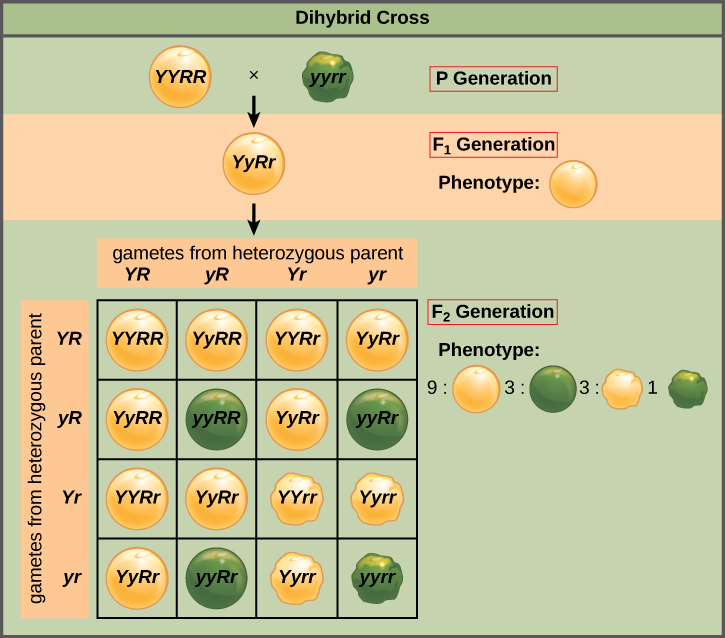READ: Dihybrid Punnett Squares
Dihybrid Crosses
What if this apple also came in two sizes: small or large?
What would you get if you crossed a small red apple and a large green apple? Possible a medium sized brown apple. Or you may still get mostly small red or large green apples, but possible some small green and large red apples. A dihybrid cross involves two traits, such as color and size
Punnett Squares and Dihybrid Crosses
The Punnett square also allows the determination of genotypes and phenotypes from dihybrid crosses. However, this process works only if the genes are independent of each other, that is, they are not linked, and they segregate independently of each other during meiosis. In other words, the inheritance of an allele of one gene does not effect the inheritance of an allele from another gene. This is usually true for alleles of genes on different chromosomes, or genes that are not close together on the same chromosome. Genes that are close together on the same chromosome may not segregate independently of each other during meiosis, and are known as linked genes.
Dihybrid crosses are more complicated than monohybrid crosses because more combinations of alleles are possible. For example, tracking the inheritance of pod color and pod form in a Punnett square requires that we track four alleles. R is the dominant allele for green pod color and r is the recessive allele for yellow pods. Y is the dominant allele for flat pod form and y is the recessive allele for constricted pod form.
If two pea plants are crossed, and one is true-breeding for green flat pods (RRYY), the other is true-breeding for yellow constricted pods (rryy), then all of the F1 generation will be heterozygous for both traits (RrYy). Figure below, shows the dihybrid cross of the dihybrid P generation and the F1 generation. Those F1 individuals will have gametes with four possible combinations of alleles: RY, Ry, rY and ry. If these individuals are allowed to self-pollinate, then 16 combinations of alleles are possible upon combination of gametes.

Summary
- A dihybrid cross-examines the inheritance of two traits at the same time.
- Dihybrid crosses are more complicated than monohybrid crosses.
- With unlinked genes, a 9:3:3:1 phenotypic ratio will result in the offspring of a cross of two completely heterozygous individuals.
